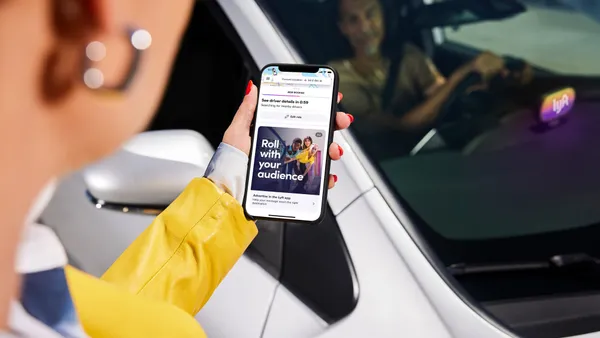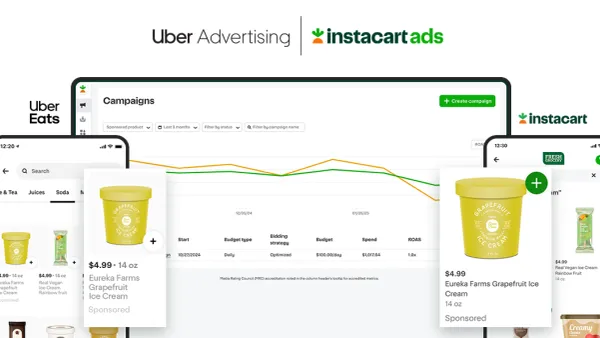New tech replaces old at lightning speed. Walk out of a phone store with the latest model in hand, and you’ll be confronted with an announcement for the next model due out in months. Experts project that by the year 2020, there will be 11.6 billion mobile connected devices providing 2.9 exabytes of data per month in the U.S. alone. An estimated 5.5 billion people around the globe – 70 percent of the world’s population – are expected to have a mobile device in their hands within the next two years. To put that in perspective, more people will have a mobile device than will have electricity.
What will everyone do with all this handheld power? Customize the experience and tailor it to their own individual needs and interests, of course. For the immediate future, that means downloading a lot of applications (apps).
Millennials in particular love apps, especially the Amazon app, but they will delete buggy apps or anything that interferes with the aesthetic of their phone's home screen. Because of this, apps have evolved to be smaller, more focused and more purposeful.
The History of Apps
Apps didn’t suddenly appear when the first smartphone was docked on retailer shelves. The concept predates widespread usage of the Internet by more than a decade. Here’s what we know about the history of apps.
- 1983: Steve Jobs forecasts software distribution system. In a speech to the International Design Conference in Aspen, Jobs stated that software distribution would digitize, and people could buy new software over phone lines.
- 1987: Psion EPOC, an early “handheld computer” debuts. Users could create their own apps on this 16-bit machine, which first landed in stores in the early 1990s.
- 1993: The Newton MessagePad arrives on the scene. Though technologically innovative, this early PDA was expensive and struggled to recognize handwriting. Jobs canned it in 1998.
- 1996: The Palm OS, the first personal digital assistant, launches. Cheaper than a Psion, Palm came equipped with a standard set of apps and paved the way for the modern handheld personal device.
- 1997: The Nokia 6110 hits the marketplace. Made especially for Nokia phones, this handy creation let people play mobile games – and they haven’t stopped since.
- 1999: WAP becomes the standard for accessing information. People could browse the Internet on a mobile device.
- 2001: The iPod revolutionizes the way we listen to music. It promised “1,000 songs in your pocket.” The iTunes Music Store follows close behind.
- 2007: The iPhone changes the world. During this year, both Apple and third-party developers begin creating apps.
- 2008: The FitBit comes out. Fitness trackers were the first wearable technology to catch on with the public. By 2014, 90 million such devices had sold.
- 2008: The HTC Dream, Google’s smartphone, hits shelves. It was the first phone to utilize the Android system.
- 2009: Blackberry launches its app store. Following on the heels of Apple and Google, Blackberry becomes the third major mobile app distributor.
- 2010: “App” is claimed Word of the Year. The ad campaign “There's an App for that” and the popular WhatsApp contributed to widespread knowledge of the new vocabulary.
- 2011: Amazon launches its app store. Now, people could do more than chat and play games. They could buy and sell, too. Commerce was happening on the run.
- 2012: Facebook buys Instagram. At $1 billion, Instagram held the highest value of any app company ever.
- 2012: 1 billion people download Angry Birds, and 200 million people played the game at least monthly.
- 2012: Candy Crush comes out. By the end of the year, it had beat Facebook, Angry Birds and YouTube for the most downloaded app of 2012.
- 2013: Google Play sees more than 50 billion downloads.
- 2013: Over 1 million apps available in Apple’s App Store. It took $13 billion to develop them.
- 2014: Facebook releases messaging app after acquiring WhatsApp. Within six months, 500 million people were using FB messenger.
- 2014: Gmail becomes the first app to hit 1 billion installations.
- 2015: The Apple Watch debuts.
- 2017: Digital assistants become popular. Siri was famous for helping the directionally challenged, but it was Amazon’s Alexa that spurred a buying spree of digital assistants.
Most Downloaded Smartphone Applications
Though there is an app for just about anything, only a few are universally popular. These include:
- Facebook: The mother of all social media platforms, Facebook's appeal is undaunted by age or culture. To earn the number one spot, Facebook was downloaded 700 million times worldwide over an eight-year span.
- Facebook messenger: At 164 MBs, this app could suck up an entire operating system, but users don't seem to care as long as they have the awesome communication power of FB Messenger.
- YouTube: The world's second-largest search engine is popular with everyone from the preschool crowd on up. What could be more fun or informative than eternal access to videos?
- Instagram: Popular with women and younger audiences, Instagram is visually appealing and easy to use. It consistently polls just behind Facebook as the most used and beloved social media platform.
- WhatsApp Messenger: Now an established messaging app, WhatsApp hasn't lost its power to connect.
- Google Maps: Thanks to its ability to keep drivers from getting lost on unfamiliar routes, Google Maps will probably never drop off the list.
- Snapchat: Much more popular with young people than with adults, Snapchat may not last on this list because of the skewed audience.
- Skype: It's the mother of all dinosaurs, but Skype still holds people’s attention when it comes to Internet video calls.
Most Profitable Smartphone Applications
Many social media and communication applications are free to download, meaning the most popular apps may not be the most lucrative. Profitable apps include:
- Netflix: First Netflix changed the way people watch TV. Now, it’s made long-form video entertainment possible anywhere there’s Wi-Fi.
- Spotify: Spotify did for music what Netflix did for television, and it’s pulling in 83 million paid subscribers.
- Pandora: Even with 71 million paid subscribers, Pandora struggles to turn a profit.
- Tencent Video: An app similar to Netflix, this Chinese video app got 500 million users, and in the last 13 years, its value has risen every quarter except one.
- Tinder: This dating app has added “swipe right” and “swipe left” to the cultural vocabulary. Tinder also spent time as the highest grossing app on the market.
- Line: Though free to download and use, this Tokyo-based communications app earns money through ads.
- IQIYI: Another Chinese video platform, IQIYI is seeing 6 billion hours of streaming every month and earning almost $1 billion in total revenue each quarter.
- HBO Now: “Game of Thrones” initially made HBO Now popular, and the app pulled in $19 million in the first two months the show aired in 2017.
Apps in the Business World
Though apps can act as businesses on their own, the rise of apps has caused companies to take action. They aren’t just for big businesses like Target or chain restaurants like Qdoba – even small businesses can benefit from apps.
There are many benefits to businesses who have their own apps, including:
- Being visible to customers. The average American spends more than two hours on a mobile phone per day, which creates the perfect opportunity for catching the attention of a consumer.
- Creating a direct marketing channel. Any information they want to share with customers can be easily disseminated through the app, and it’s sent directly to consumers’ fingertips.
- Foster customer engagement. The communication channel an app creates isn’t one way; they provide an easy and convenient way for customers to contact a business.
Apps are just one small part of a growing innovation in the business world. To stay up on the latest trends, you’ll need a business degree. Virginia Wesleyan University’s flexible online bachelor's degree in business can give you the foundational skills you need to adapt and thrive. Learn fundamentals such as economics, marketing, accounting and more to gain the advantage for future business trends.










